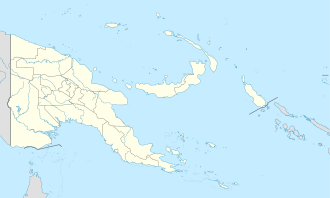| Geography | |
|---|---|
| Location | Oceania |
| Coordinates | 11°18′14″S152°17′21″E / 11.30389°S 152.28917°E |
| Archipelago | Louisiade Archipelago |
| Adjacent to | Solomon Sea |
| Total islands | 2 uninhabited |
| Major islands | |
| Area | 0.12 km2 (0.046 sq mi) |
| Administration | |
| Province | |
| District | Samarai-Murua District |
| LLG [1] | Louisiade Rural Local Level Government Area |
| Island Group | Duchateau Islands |
Largest island | |
| Demographics | |
| Population | 0 (2014) |
| Pop. density | 0/km2 (0/sq mi) |
| Ethnic groups | Papauans, Austronesians, Melanesians. |
| Additional information | |
| Time zone | |
| ISO code | PG-MBA |
| Official website | www |
The Montemont Islands are an island group in the Coral Sea, belonging to Papua New Guinea. They lie to the east of Panarairai Island in the Louisiade Archipelago.
